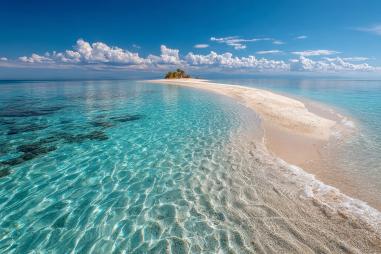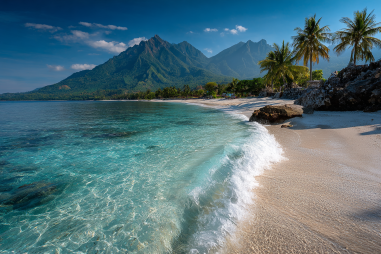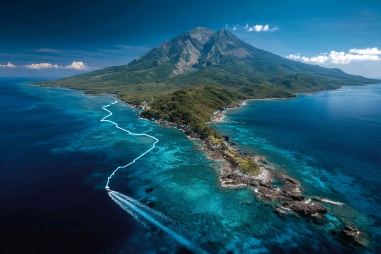The Philippines is a stunning archipelago boasting pristine beaches, vibrant culture, and warm hospitality. Exploring its beauty doesn’t need to come with a hefty price tag. With a little planning, savvy choices, and insider know-how, you can experience the best the country has to offer without stretching your budget. Here are some smart tips to help you make the most out of your trip while keeping costs low.
Planning Your Budget Trip
Starting your journey with a solid plan is key to sticking to your budget. Researching destinations, seasons, and travel deals ahead of time can save you a lot of money. The best time to visit the Philippines for budget travelers is during the shoulder seasons—usually from May to June or September to November—when accommodation and flight prices tend to drop, but the weather is still pleasant enough to enjoy outdoor activities.
Setting a daily budget helps keep your spending on track. Consider your priorities: are you splurging on experiences, or is saving on accommodation more important? Booking flights early and opting for budget airlines like Cebu Pacific and AirAsia Philippines also helps snag great deals.
Affordable Accommodation Options
In the Philippines, accommodation ranges from luxury resorts to budget-friendly hostels and homestays. To stretch your peso, consider these affordable options:
- Hostels: Many hostels in tourist hotspots offer dormitory beds for as low as ₱300-₱500 per night, perfect for solo travelers or friends looking to save.
- Guesthouses and Homestays: These provide a local touch at reasonable prices, often including breakfast and helpful hosts who can share tips to explore the area affordably.
- Budget Hotels: A step above hostels, budget hotels can be found starting at ₱800 per night, ideal for travelers who want privacy without spending a fortune.
- Airbnb and Vacation Rentals: Renting a room or an apartment can be a cost-effective choice, especially for longer stays or groups.
Booking online and reading reviews can help you find trustworthy and safe places. Staying away from the most touristy streets can also lower costs without sacrificing location convenience.
Cost-Effective Transport Choices
Getting around the Philippines on a budget is easier than you might think if you know where to look. Here are some transport options that keep expenses low:
- Jeepneys: The iconic, colorful jeepneys are the cheapest way to travel within cities and towns, usually costing just a few pesos per ride.
- Tricycles and Motorbikes: These are ideal for short distances and rural areas, often negotiable in price. Always agree on the fare beforehand to avoid confusion.
- Buses and Vans: For intercity travel, air-conditioned buses and vans provide affordable and comfortable transport, with fares varying depending on the distance.
- Domestic Flights: When hopping between islands, look out for budget airlines offering promo fares—book several weeks in advance to get the best prices.
- Ferries: Ferries connect many islands at reasonable rates if you’re not in a hurry, giving a scenic alternative to flying.
Eating Well on a Budget
Filipino cuisine is flavorful and diverse, and you don’t have to dine at expensive restaurants to enjoy it. Eating like a local is one of the best ways to save money and immerse yourself in the culture.
- Street Food: Sample treats like taho (sweetened silken tofu), grilled skewers, bananacue, and balut for pocket-friendly snacks.
- Carinderias and Eatery Stalls: These small local eateries serve hearty meals like rice, vegetables, meat, and fish at very low prices.
- Public Markets: Pick up fresh fruits, bread, and inexpensive food items to prepare your own meals if your accommodation has kitchen facilities.
- Avoiding Tourist-Focused Restaurants: While tempting, these places tend to be pricier. Exploring places where locals eat will give you more authentic food at a fraction of the cost.
Free and Low-Cost Activities
The Philippines offers plenty of enriching experiences that won’t cost you much:
- Beach Days: Many beautiful beaches such as Sabang Beach in Palawan or White Beach in Boracay have low or no entrance fees. Bring your own snorkeling gear to avoid rental fees.
- Hiking and Nature Trails: Trekking spots like Mt. Maculot and Mt. Pulag offer amazing views for minimal registration fees.
- Local Festivals: Participating in colorful festivals such as Sinulog or Pahiyas can be free and incredible cultural experiences.
- Public Parks and Historical Sites: Places like Rizal Park in Manila and Intramuros have low-cost entry to explore Philippines’ rich history.
- Community Tours: Some towns offer free or donation-based walking tours guided by locals.
Tips for Avoiding Tourist Traps
Tourist traps often lead to wasted money and time. Here’s how to steer clear:
- Research in Advance: Identify popular spots and read traveler reviews on forums or blogs to spot overpriced or underwhelming activities.
- Negotiate Prices: Always haggle politely for transportation and souvenirs, as initial prices can be inflated for tourists.
- Choose Authentic Experiences: Opt for community-run tours and local providers rather than big commercial operations which tend to be pricier.
- Avoid Overpriced Shops Near Attractions: Buy souvenirs in local markets instead of gift shops in tourist zones.
- Check Entrance and Activity Fees: Sometimes fees are negotiable or discounted on certain days or times.
Managing Safety While Budgeting
Safety is important wherever you go, and it doesn’t have to be expensive. Here are some tips to stay safe on a budget:
- Stay in Well-Reviewed Accommodations: Prioritize places with good safety ratings and secure premises.
- Keep Valuables Secure: Use money belts or hidden pouches and avoid flashing expensive items.
- Travel in Groups or with Locals: For remote areas or night outings, having company increases safety.
- Use Trusted Transport Services: Stick to official jeepneys, taxis with meters, or ride-hailing apps like Grab instead of accepting rides from strangers.
- Stay Informed: Monitor local news and travel advisories to avoid risky areas.
Sample Daily Budgets and Itineraries
To give you a clearer idea, here are examples of what daily budgets might look like depending on your travel style:
Backpacker Budget (₱1,000-₱1,500 per day)
- Accommodation: Hostel dorm bed (₱400)
- Food: Street food and carinderia meals (₱300)
- Transportation: Jeepneys and tricycles (₱150)
- Activities: Free beach or hiking (₱150)
Total: ~₱1,000 per day
Comfortable Budget (₱2,000-₱2,500 per day)
- Accommodation: Budget hotel/private room (₱1,200)
- Food: Mix of local eateries and occasional restaurants (₱500)
- Transportation: Buses, occasional taxis or Grab rides (₱400)
- Activities: Paid entrance to popular sites and day tours (₱300)
Total: ~₱2,400 per day
Sample Itinerary for Three Days in Palawan
- Day 1: Arrive in Puerto Princesa, visit the public market and Rizal Park, rest at a budget guesthouse.
- Day 2: Take an affordable tour of the Underground River (shared boat tour with local operators), picnic lunch.
- Day 3: Island hopping around Honda Bay using public tours, enjoy sunset at the beach, local dinner.
With these budgets and tips, you can tailor your trip to fit your style without overspending.
Traveling the Philippines on a budget is absolutely doable with a bit of foresight and flexibility. By choosing affordable accommodations, making smart transportation decisions, savoring local foods, and engaging in cost-effective activities, you’ll enjoy a rich and memorable experience without worry. Embrace the local culture, think creatively, and dive into the adventure—your budget-friendly Filipino getaway awaits!







